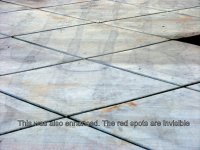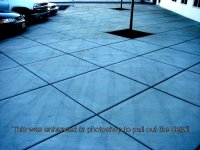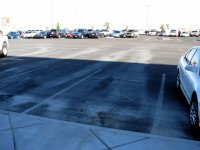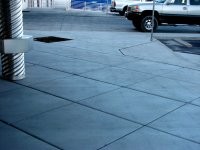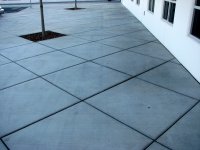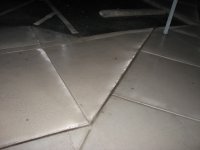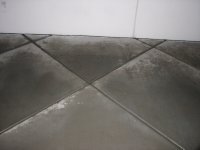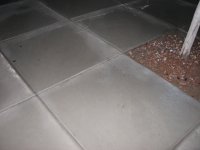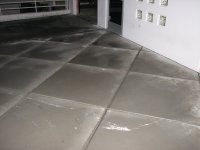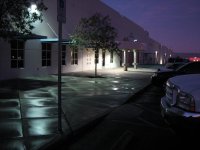Tony Shelton
BS Detector, Esquire
I'm doing the front of a manufacturing facility that runs 24 hr shifts everyday except for Sunday with an 8 hr shift. Thank goodness my time is limited. I worked on this Sunday and told the owner I would come back every Sunday until the job is complete. So he's not pissed about this hack looking job.
Keep in mind this is my FIRST job larger than a sidewalk and entryway!
I was able to do about 3000 square ft in 3 hrs. I thought I had a little striping. Ron said that might be from not rinsing enough. I didn't know till the next day the whole job was striped! Was I walking too fast? Why did this happen?
I didn't use any chemicals at all. My water was about 190. Why did I get all this white stuff all over the pavement?
Why did it take me longer to rinse than wash? I tried rinsing with the variable pressure wand. I tried with a 25 then a 40 tip. I tried higher pressure, I tried low pressure. It just took forever.
I went over with the surface cleaner first doing about 500 square feet then rinsing. I rinsed with hot water and got up all the gum in each area immediately after each rinse with low pressure and 200 degree water. (The gum was the only good accomplishment of the night.)
These pictures are ENHANCED with photoshop to draw out the detail so you can see what happened. The last two pictures were not enhanced to show you how it looks to the naked eye.
I'm not a hopeless case. I just need some help.
Keep in mind this is my FIRST job larger than a sidewalk and entryway!
I was able to do about 3000 square ft in 3 hrs. I thought I had a little striping. Ron said that might be from not rinsing enough. I didn't know till the next day the whole job was striped! Was I walking too fast? Why did this happen?
I didn't use any chemicals at all. My water was about 190. Why did I get all this white stuff all over the pavement?
Why did it take me longer to rinse than wash? I tried rinsing with the variable pressure wand. I tried with a 25 then a 40 tip. I tried higher pressure, I tried low pressure. It just took forever.
I went over with the surface cleaner first doing about 500 square feet then rinsing. I rinsed with hot water and got up all the gum in each area immediately after each rinse with low pressure and 200 degree water. (The gum was the only good accomplishment of the night.)
These pictures are ENHANCED with photoshop to draw out the detail so you can see what happened. The last two pictures were not enhanced to show you how it looks to the naked eye.
I'm not a hopeless case. I just need some help.


